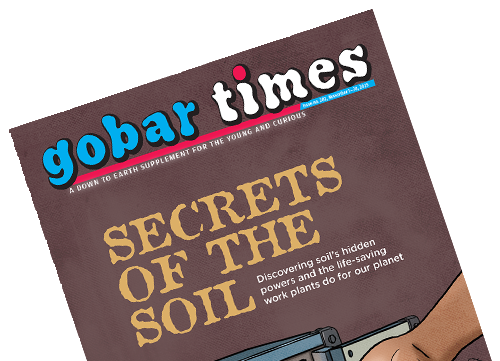
To burst or not to burst?’ is a question many young humans might be asking as the patakha (firecracker) season begins. Teachers and doctors tend to advice against firecrackers but there’s always a paan-chewing uncle or a macho friend who’ll bully you kids into becoming enthusiastic arsonists. It’s usually a tough choice to make. Some additional information is always a good help in firming up ones’ resolutions. Therefore, let's throw some light on the history, chemistry, and eco-friendliness of patakhas.

In the era of fast fashion, things are made quickly and for a fraction of the cost but end up being expensive for the environment. Today, the textile industry is one of the most polluting industries in the world and in India, it is the third-largest source of waste after plastic, paper and compost.

What kind of world will the younger generations inherit? Piu gets a hint.

Renewable energy can be a viable power source for our airports, stadiums & homes. Piu entered the house panting one summer afternoon and said, “I have no energy to do anything.” She had come back from school and was completely exhausted. Her mother came to her rescue and handed her a glass saying, “This should energise you.

The little things in life are easy to misplace. What's even easier is to lose them. Here's a way to find all your little belongings at one place and make sure that you don't lose them. Step 1: Take a rectangular cardboard box with a lid. You can use a discarded shoebox from the house. Step 2: Open the lid of the shoebox and measure its height with the help of a scale. Note the reading. Step 3: Take the leftover cylindrical cardboard from a finished roll/sheet of aluminum foil and cut it into smaller parts... Read more here.

40 per cent insect species are declining, a third are endangered.

The clothing industry puts a huge strain on the environment. How? Let us take a look at the life of a common garment: t-shirt.

In the guise of development, what allows us to be callous with earth's resources? A study conducted by Indian Institute of Soil Science shows that majority of the soil in India is deficient in secondary nutrients, such as sulphur, and micronutrients, such as zinc, boron, iron, copper and manganese. The question then is how nutritious can our food be if it is grown on malnourished land? Many other villages are suffering, like Jaduguda and Kolaghat, because the polluter does not take the responsibility of the waste, burdening locals with unseen consequences...

